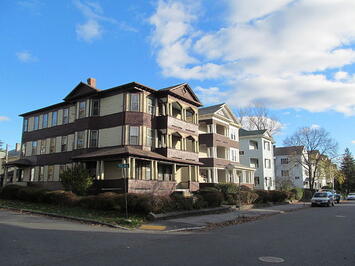
My latest column is now online at Governing magazine. It’s a further discussion of Howard Husock’s book The Poor Side of Town: And Why We Need It. For those of you who weren’t able to check out the recording of our AEI book event, this piece discusses some of the key points.
Below is an excerpt from the column:
This was cheap housing, but that didn’t just mean cheaper rents. It meant the opportunity for ownership. A key characteristic of many of these neighborhoods was what Husock labels “owner presence.” Even in crowded neighborhoods, apartment buildings like the Boston triple-decker or Chicago two-flats allowed residents to buy the building and live in one unit, while renting out the other to earn income. A surprisingly high share of people who rented in these places lived in buildings where the owner was also living. The owners accumulated wealth in the form of equity in their real estate that was a key to their ability to move up economically.
One common factor in these places was a tolerance for housing that reformers judged substandard. Tenements on the Lower East Side, for example, often lacked baths. Levittown houses were tiny, identical boxes on concrete slabs. But the policy response to the legitimate problems of some of these neighborhoods was a cure often worse than the disease. Mass slum clearance and the construction of huge high-rise public housing projects are the most infamous examples.
The replacement of “slum” housing with public housing was not only a quality-of-life disaster, it also locked its residents into permanent rentership. Detroit’s Black Bottom neighborhood may have been segregated, but it gave Black residents the opportunity to own real estate and own and operate businesses. In public housing, Black residents could do neither, cutting off critical avenues of wealth creation.
This piece first appeared on Heartland Intelligence.
Aaron M. Renn is an opinion-leading urban analyst, consultant, speaker and writer on a mission to help America’s cities and people thrive and find real success in the 21st century. He focuses on urban, economic development and infrastructure policy in the greater American Midwest. He also regularly contributes to and is cited by national and global media outlets, and his work has appeared in many publications, including the The Guardian, The New York Times and The Washington Post.
Photo credit: John Phelan via Wikimedia under CC 3.0 License.












